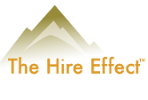As an entrepreneur it is incredibly satisfying to watch a client drive their own success from work I did with them years ago.
A Baseline Project was initiated in December 2018 and involved a small group, a SaaS company serving the home care industry.
Their work in The Hire Effect Self-Accountability Baseline Project began with setting clear expectations around:
- Roles responsibilities
- Metrics for success
- Qualifications to hold the set of roles
- Core skills and personality traits that would drive their success
These expectations showed up in the first tool introduced to them, a Roles Responsibility Document (RRD). This document is a living, breathing representation of a position. Think of it as a position description on steroids. It’s different from a position description in that it is centered on responsibilities rather than a listing of tasks and duties.
These documents help individuals achieve their goals and hold their responsibilities well without weekly, perhaps even daily, direction from their boss. They also drive the whole team to:
- Better coordinate among individuals (see and act more effectively in shared areas of responsibility and where responsibilities are connected)
- Identify professional development opportunities (education and training that could be an excellent investment for the company and the individual)
- Identify hiring needs (allow innovation of positions to best suit those staying on the team and see what the team needs to function well next)
- Work together to bring solutions for team formation to leadership (employee choice)
As an aside: shockingly, in over 700 interviews to form these RRDs with clients, not once has the initial draft been exactly the same interpretation that the manager had!
My client’s team was suffering the possible loss of a valued team member. The individual was burnt out and had given a generous 10 week notice. A small group of employees familiar with the position that was soon to be vacated did something amazing.
They:
- Pulled apart all the individual RRDs for those people working with and around the vacated position along with the RRD that represented the newly vacated position – naming each role being held (in total there were about 12 roles being held by 4 people)
- Got clear on the percentage of time spent on each role
- Identified opportunities to increase company value by possibly investing more time and resources in specific roles
- Collected the roles in a number of different positions, always putting those roles that seemed like outliers into the Gap position (the position they’d eventually need to hire for)
- Presented the new RRD to the company leadership
With great excitement, the development team lead (another part of the company altogether) saw a lot of commonalities in the new position description with the current needs he had for his team. Then came the realization that the individual leaving the team in a couple weeks was the perfect fit for this new role.
The team brought the solution to the CEO who was relieved and excited to have them moving so powerfully. The team was authorized by the CEO to present the new position to the soon to be leaving valued team member and Voila! A valuable asset of the company was saved!
How is your team working together to assure valued members are staying relevant and engaged?
Is your team developing solutions without you having to direct them? (And how might you be able to put systems into place to make that happen?)
And considering these questions: What might you be able to work on that you wouldn’t have the opportunity to otherwise?
####
M. Miche Rayment is the Founder and CEO OF The Hire Effect™. The Hire Effect’s clients learn how to build self-accountability on their team to achieve excellent results in their work and how to choose their next great team member.

